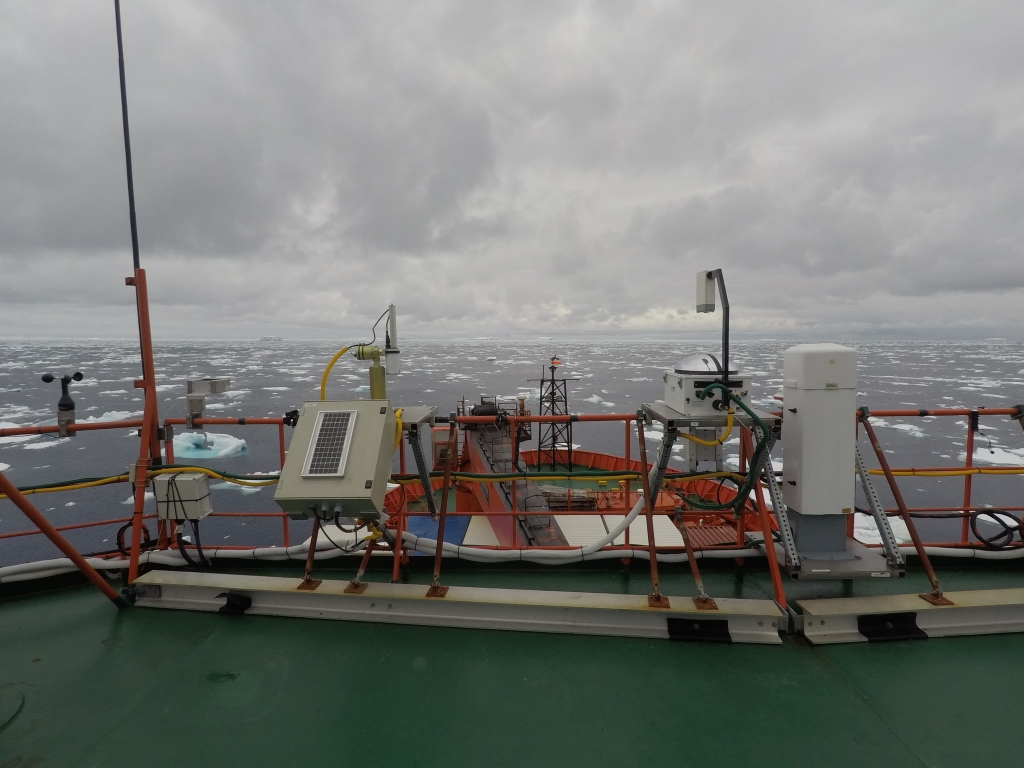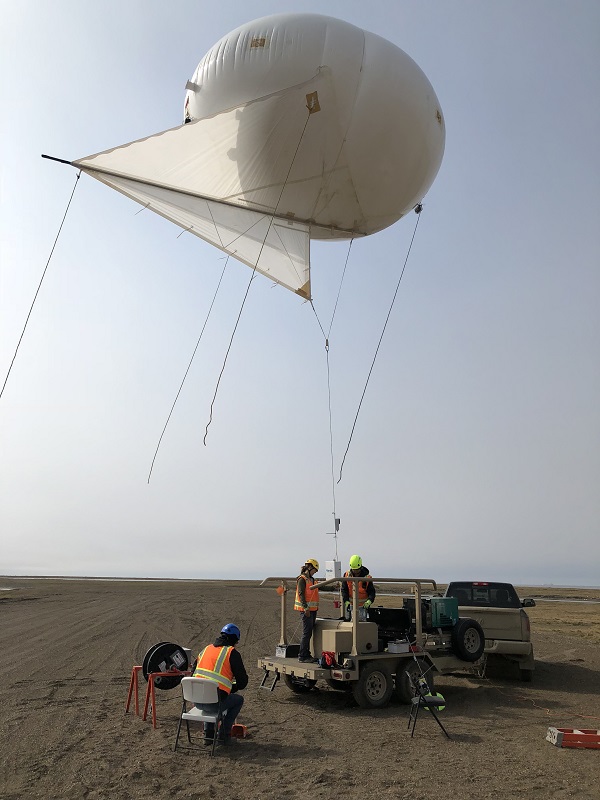Polar Convergences
Published: 23 July 2019
ARM is busy with key efforts to study the Arctic and other polar regions

Starting in September 2019, scientists and their advanced instruments will have a full year in the central Arctic to study the atmosphere, biogeochemistry, and ecology of the world’s fast-changing northernmost polar region.
Their international expedition, Multidisciplinary Drifting Observatory for the Study of Arctic Climate (MOSAiC), will be centered on a German icebreaker frozen into a drifting ice pack. The expedition, the most sophisticated and lengthy of its kind ever, will marshal over 60 research institutions in 17 countries and involve more than 600 scientists, technicians, and logicians.
The U.S. Department of Energy (DOE) and its Atmospheric Radiation Measurement (ARM) user facility are among those supporting the effort.
ARM will deploy some of the most critical atmospheric instruments during MOSAiC, and is expected to eventually create more terabytes of data than any other campaign participant.
One Among Many
Yet MOSAiC is just one of many expeditions during a busy period for scientists worldwide investigating the Arctic and other polar regions—a convergence of research efforts that MOSAiC co-coordinating scientist Matthew Shupe outlined during the 2019 Joint ARM User Facility/Atmospheric System Research (ASR) Principal Investigators Meeting in Maryland.
For one, a 21-nation, 10-year global modeling and observation effort called the Polar Prediction Project is underway through 2022. Its goal is to improve polar research and forecasting.
One key element of that project is the Year of Polar Prediction (YOPP), which coordinates intensive worldwide observational and modeling efforts from 2017 to 2019. DOE, says Shupe, “is making major observational contributions.”
Those contributions include ARM’s 2017–2018 Measurements of Aerosols, Radiation, and Clouds over the Southern Ocean (MARCUS) field campaign, which appears on a list of YOPP-endorsed projects.
During MARCUS, over seven months in the remote and pristine Southern Ocean, ARM instruments aboard the Aurora Australis collected data on aerosol sources and sinks. The Australian supply ship runs regular routes between Hobart, Australia, and research stations in Antarctica.

On the North Slope of Alaska, during ARM’s Profiling at Oliktok Point to Enhance YOPP Experiments (POPEYE) field campaign from July 1 to September 30, 2018, researchers took in 121 hours of tethered balloon data from within and above clouds. These data provided details on aerosol properties, temperature, and humidity.
To Come: Stunning Data
An arctic complement to MOSAiC is an ARM field campaign called Cold-Air Outbreaks in the Marine Boundary Layer Experiment (COMBLE). It is scheduled to take place in northern Norway from January 1 to May 31, 2020.
With lead scientist Bart Geerts of the University of Wyoming at the helm, COMBLE will deploy an ARM Mobile Facility in the village of Andenes, Norway, at the northernmost tip of Andøya, an island located within the Arctic Circle. A secondary observation site will be 580 kilometers (360 miles) away on Bjørnøya—Bear Island—in the Barents Sea.
With those instruments, and by leveraging data from air and satellite assets, COMBLE aims to learn more about the open-sea shallow convection cloud regime during cold-air outbreaks. The regime remains poorly understood and is not well represented in models.
In particular, Geerts and others on the COMBLE team (which includes Shupe) ask: In the Arctic’s climate system, what is the role of marine boundary layer clouds over open water?
From all these separate, yet collaborative, research campaigns, incredible data will soon be at hand from the Arctic—unprecedented long-term measures in regions of the world where it is increasingly critical to close any knowledge gaps.
At the Maryland meeting, excited for what the future holds, Shupe called out to an audience of researchers: “Get your proposals in!”
Keep up with the Atmospheric Observer
Updates on ARM news, events, and opportunities delivered to your inbox
ARM User Profile
ARM welcomes users from all institutions and nations. A free ARM user account is needed to access ARM data.


















